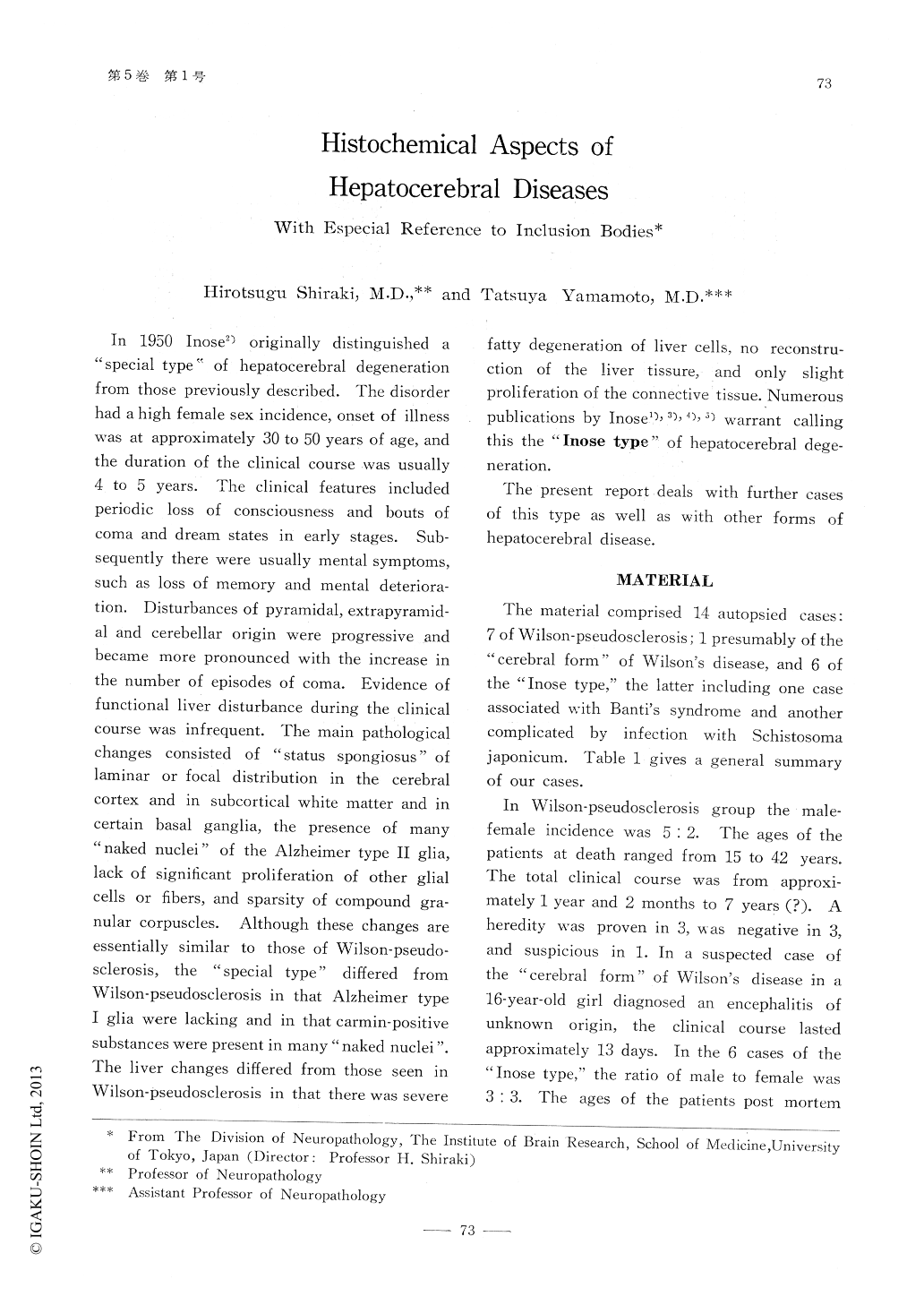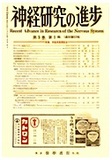- 有料閲覧
- 文献概要
- 1ページ目
1.Our 14 cases comprised 7 of Wilson-pseudosclerosis, 1 of suspected "cerebral form" of Wilson's disease, and 6 of the "Inose type". They were studied both histopathologically and histochemically.
2.Carmin-positive substance presumably originating from glycogen was encountered in the brain in all the cases of the "Inose type", but was negative or only slightly positive in Wilson's disease. The substance was found in the liver in both diseases.
3.Both carmin- and PAS-positive substance in the cerebral cortex was present in the periadventitial space of arterial vessels, nuclei, perinuclear cytoplasm and processes of astrocytes, neurogliopil in general, perikaryon and dendrites of nerve cells, and in the perineuronal space. It was postulated that astroglia have an anabolismic function with respect to both substances.
4.PAS-positive granules in the "Inose type" were occasionally seen in the myelin sheaths of both grey and white matter. They were presumably associated with an abnormality of lipid metabolism. This was suggested also in a case of Wilson's disease in which routine fat staining in the basal ganglia was positive.
5.Numerous eosinophilic inclusion bodies were found in the brain in one case of suspected "cerebral form" of Wilson's disease. The inclusions predominated in the nuclei and cytoplasm of astrocytes of the cerebral cortex and were present in smaller numbers in nerve cells of the cerebellum (Purkinle cells), basal ganglia, and substantia nigra. There is some histochemical evidence that these inclusion bodies consist mainly of proteinaceous substances, including certain amino-acids such as arginine and histidine.
6.Identical inclusions were constantly encred in the "Inose type", and not infrequently were abundant in the nuclei of cells of the substantia nigra. They were far less constant and abundant in Wilson's disease. In this disease they were occasionally abundant in softened areas of the putamen and the cerebral cortex.
7.Similar inclusions were also observed in various diseases of the central nervous system other than hepatocerebral. There was a tendency for the number of inclusion bodies to run parallel with the age of the patient. Factors other than age per se must, however, also be considered in the development of the inclusions. A suggestive abnormality of aminoacid metabolism in the brain was noted histochemically in our cases.
8.Copper granules were identified histochemically in the liver in Wilson's disease, but not in the brain. The copper content in the brain in Wilson's disease as well as in the liver was considerably increased in our cases, as demonstrated by radiochemical analysis. Our data corresponded well to those of previous investigators.
9.An increase in the number of iron-positive granules in astrocytes of the basal ganglia, particularly in those of the striatum, was demonstrated histochemically in some cases of Wilson's disease. Faulty metallic metabolism in general should. therefore, be considered as a pathogenic factor in the development of hepatocerebral disease.
10.Our histochemical findings varied not only within different disease categories, i.e., in Wilson's disease and in the Inose type, but also from case to case in each category.

Copyright © 1960, Igaku-Shoin Ltd. All rights reserved.


